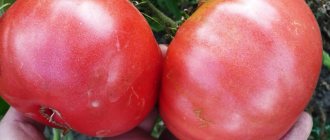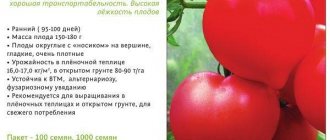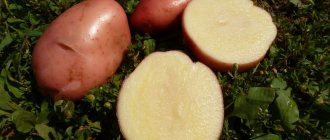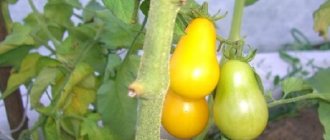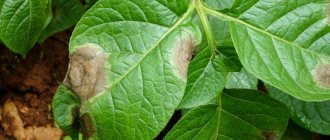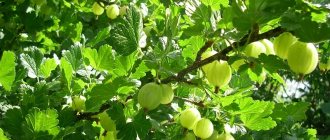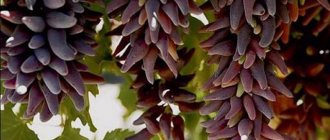| General information about the variety | |
| Parent couple | Frumoase Albe x Korinka Russian |
| Author of the variety: | VNIIViV named after. ME AND. Potapenko, Russia |
| Main characteristics | |
| Purpose: | dining room |
| Ripening time: | early |
| Productivity: | high |
| Taste: | harmonious, with light notes of nutmeg |
| Color: | green-white |
| Frost resistance: | up to — 26°C |
| Description of a bunch of grapes | |
| Bunch weight: | 500-700 g |
| Bunch density: | moderately loose |
| Description of grapes | |
| Berry shape: | slightly oval |
| Berry weight | 7-8 years |
| Diseases | |
| Disease resistance: | High resistance to mildew, oidium, gray rot. |
We are all looking forward to summer and fruit season. We rejoice in the fruits that we grew with our own hands. What if these are grapes - a rather rare guest in Russian gardens? We want to choose the most delicious, aromatic and beautiful variety! The Galbena Nou grape has all of the above qualities. In Moldavian it means “New Yellow”. This white table grape variety, unique in its properties, is also known as “Zolotinka”.
Obtained by crossing “Frumoas Albe” and “Korinka Russian”. A wonderful muscat variety was bred at the Novocherkassk All-Russia Research Institute of Viticulture and Winemaking.
Advantages
- very sweet and aromatic fruits;
- juicy pulp without seeds;
- suitable for making raisins;
- high yield and early pregnancy;
- good winter hardiness.
This is an excellent grape for fresh consumption. The exquisite aroma and pleasant taste will not leave anyone indifferent! The absence of seeds is also a big plus of the Galbena Nou grapes. You can make juices, various desserts and drinks (except wine) from it. It is very rarely used to make wine. This variety stores well in a cool place, such as a refrigerator or on the balcony if the weather is cool.
You can make excellent raisins from Zolotinka. You will love its natural bright taste, not like raisins from the store. The fruits do not need to be treated with anything. Therefore, homemade dried fruits will be much healthier than store-bought ones.
general characteristics
Grapes of the Moldovan selection “Frumoasa Albe” and the pride of the Institute named after I.V. Michurin “Korinka Russian” were involved in the work on developing the variety. The variety, unique in its combination of positive characteristics, has not yet been included in the state register of breeding achievements, but despite this, it is widely distributed among winegrowers under the names “Zolotinka” or “New Yellow”.
Description of the plant
"Zolotinki" bushes are tall. With proper care, the vine can reach 3 meters in length. At the same time, the ripening of the vine is almost 100% along the entire length. The peculiarity of the variety is that both young and perennial shoots have increased flexibility. Therefore, the plant is not afraid of even strong gusty winds. The leaf blades are light green, small in size, and round in shape. The general appearance of the bush is similar to an ornamental plant. This tree can be used for landscaping gazebos or canopies.
“New Yellow” is an early ripening variety. An average of 125 days pass from bud break to full ripeness of the berries. The flowers of the plant are bisexual, that is, pollination occurs without the help of other varieties. The bush bears fruit well in a single planting. This is very attractive to gardeners with small plots.
The frost resistance of the variety is above average. A grape tree without shelter tolerates frosts down to -25 degrees. It is not afraid of sudden temperature changes. Such qualities make it possible to grow Galbena Nou in all regions of the country and neighboring countries.
Fruit clusters are often of a regular conical shape, sometimes branched. The average weight of one bunch is 500-700 g, some specimens reach 1.5 kg.
The clusters are large, cone-shaped, weight ranges from 400 to 700 g, if proper agricultural practices are followed - 1.5 kg. The berries are not densely spaced, which makes the bunches look loose.
Interesting!
Seedless varieties have one distinctive feature - they are all excellent pollinators.
Features of berries and their use
The weight of berries may vary depending on care and weather conditions. On average, the weight of one berry ranges from 6 to 9 grams. The shape of the fruits is predominantly round, oval ones are rare. The skin of unripe berries is green. As the berries ripen, they acquire a golden hue. The taste is excellent. Galbena Nou is one of the five best tasting white grape varieties. Berries of balanced taste with a high sugar content and a pleasant nutmeg aftertaste. The pulp is elastic, juicy, seedless.
The fruits have a universal purpose. As a dessert, they can be consumed fresh, juices and compotes can be made. Muscat berries make rich homemade wine drinks. The dense structure of the grapes makes its cultivation commercially profitable. The bunches do not crumble and retain their fresh appearance during transportation.
Productivity
The variety is early ripening, the first “signals” are formed already in the second year of planting. Productivity is assessed as average, but annually stable. From one square meter you can collect 5-6 kilograms of berries.
Formation of the vine
- The variety has 70-85% fruit-bearing shoots; from one to one and a half clusters are formed on one shoot.
- If pruning is for 6-10 buds, a load of bushes of 35-45 buds is recommended.
- Short pruning is also possible, for 3-4 eyes. Even at the base of the shoot, the eyes have good fruitfulness.
- Pruning is often carried out in the fall, especially in the northern regions. The reason is simple - it is more convenient to cover small bushes.
- Excess ovaries are removed so that approximately one cluster remains for two shoots. Don't get too carried away with removing brushes. If you underload, the ripening of shoots will worsen and winter hardiness will suffer.
Before flowering, it is recommended to spray with fungicides. This way you can avoid fungal diseases and reduced yield. Good ventilation of the bushes plays an important role. The flow of fresh air significantly reduces the risk of disease. These activities will help keep the bushes healthy:
- Tying to a trellis;
- Pinching (removal of side shoots);
- Removing weeds around the bush.
They are carried out in 3 stages: when the shoots have grown to 20 cm, before flowering and when the fruits are the size of a pea.
Vineyard care
The yield depends on how well the plants are cared for. By carrying out standard agrotechnical practices in a timely manner, the gardener receives the declared harvest.
Watering
Regular watering is necessary only at the initial stage. Water is especially important in the first years of a bush’s life. Water regularly after the top layer of soil dries. To preserve moisture, it is recommended to loosen the top layer.
Adult plants are watered only 3 times: before flowering, after fruiting and in preparation for winter.
The berries of the grapes crack, so watering should be moderate, but it is also better not to allow the soil to dry out.
See also
Description and characteristics of the Livadia Black grape variety, history and cultivation rulesRead
Fertilizer
Feeding is necessary for young and adult plants. Galbena No requires organics, but you can’t go too overboard. Oversaturation will cause leaves and shoots to begin to grow, but there will be no berries.
In early spring and autumn, it is recommended to feed the bushes with complex mineral fertilizers.
Pruning and shaping the vines
Gardeners recommend pruning in the fall, then the procedure will be painless for the plants. 45 eyes are enough for normal growth and development of the hands.
Bushes are also pruned in the middle of summer, but this only applies to inflorescences. A large number of ovaries will result in small berries.
If there are few brushes, all the strength of the bush will go to forming the vine, it will be thick. Trimming brushes should be done experimentally. The gardener himself determines the number of ovaries that need to be left.
Spring or autumn?
When planting in autumn, grapes must have time to take root before the onset of frost. Therefore, in the northern regions it is better to plant in the spring. Definitely in warm soil. In the south, autumn planting is preferable. In hot, dry weather, it will be more difficult for seedlings to take root. Especially if you don’t water often.
Main landing rules:
- the distance between seedlings in a row is 2-3 meters and between rows is at least 3 meters;
- the size of the planting hole is half a meter in diameter, the depth is greater than the length of the roots of the seedlings;
- the pit is prepared in advance: filled with humus, superphosphate or complex fertilizer is added;
- the seedling is sprinkled with soil halfway up, watered, the soil is compacted and soil is added up to the first eye plus 2 cm;
- For the winter, young seedlings need to be covered.
In northern regions, such as central Russia, etc., it is better not to take risks and cover even mature bushes. With good care, signals appear in the 2nd year - the first fruits. They may differ slightly from varietal characteristics. Be patient - in a year your grapes will show themselves in all their glory!
Features of agricultural technology
Caring for Galbena Nou grapes is easy. All agricultural techniques are available to every gardener; you just need to take into account some of the characteristics of the variety.
Landing
You can grow a grapevine by planting seedlings or cuttings. With the cutting method, planting work is best done in the autumn; seedlings, on the contrary, take root better in the spring.
Grape bushes prefer soil rich in humus. Plants feel comfortable on hillsides and rocky areas. The groundwater level should not exceed 2.5 meters from the soil surface.
Planting holes are prepared in advance so that the soil settles well. Otherwise, there is a high probability of root voids occurring, which leads to the death of the plant.
Before planting, you should consider which side the support for the bushes will be located on. It is necessary to place the seedlings with an inclination in this direction when planting. This way, the vine will naturally reach towards the support, which means it will be easier to tie it up.
You should know!
“Zolotinki” bushes have powerful roots, so they will not welcome neighbors planted close to them. The interval between grapes and fruit trees (shrubs) must be at least four meters.
Watering
| Soil type | Amount of water per 1 m2, in liters |
| Clayey | 40-50 |
| Sandy loam | 60-70 |
| Sandy | 80-90 |
| Deadline | Name of works |
| May 1-10 immediately after the buds open | Get rid of root growth by cutting it off at soil surface level. Be sure to cut out shoots that duplicate fruit branches and underdeveloped branches with signs of disease. |
| June | Pinch the tops of vigorous shoots, shortening them by 5-10 cm. Carry out normalization, unloading the bush from extra bunches. |
| August 20-30 | Carry out chasing of vines. To do this, remove the tops of all shoots with 6-8 upper leaves. |
| October 1-10 | At the end of sap flow, when the grapes go into a dormant state, the vine is pruned, leaving 7-8 buds on each shoot. |
Advice!
Experienced winegrowers advise removing the upper of the two bunches on one shoot when normalizing. As a rule, it is formed smaller in size.
Signals for the second year of growing season.
The beginning of agrotechnical activities consists of planting, which includes several points:
- planting period;
- compliance with the planting scheme;
- compliance with hole dimensions;
- fertilizing;
- correct placement of seedlings;
- layering and compacting.
- Autumn planting should take place no later than November, since new gardens need time to adapt before the first frost occurs.
- Spring planting takes place from the second half of March to the end of April.
Diseases and pests
| Stable | Not stable |
| Mildew (grape downy mildew) | Oidium (powdery mildew of grapes) |
| Gray rot | Damaged by wasps and birds |
With oidium
- a gray coating appears on the leaves;
- growth stops;
- inflorescences die;
- the berries dry out.
Powdery mildew can appear when the weather is too damp or, conversely, too dry. It is easier to prevent a disease than to fight it later and, possibly, lose a significant part of the harvest.
Prevention
Good ventilation, airing the bushes, maintaining a distance when planting, spraying with fungicidal agents.
Reviews
The Galbena Nou grape variety is very popular among winegrowers. Its amazing taste and unpretentiousness receive rave reviews from gardeners from various parts of our country and neighboring countries. Here are a few that may be useful to you:
- the variety has a bright, rich taste and nutmeg aroma;
- harmonious combination of sweetness and juiciness;
- not prone to peas;
- some berries may crack, but this is rare;
- more often they grow “for themselves”, not for sale, but some buyers adore this particular variety;
- high sugar content (21% at the end of August), the fruits gain sweetness several days before technical ripeness.
The Galbena Nou grape is an excellent variety for both beginners and more experienced winegrowers. Early ripening, unique aroma and taste, ease of care and disease resistance make it ideal for the garden. Let the sweet clusters of this variety delight you every autumn!
History of the variety's creation
The goal of Soviet breeders of the 60–80s. of the last century was to develop “ideal grapes” that could adapt to different climatic conditions and at the same time have bright taste characteristics. For this purpose, the Frumoas albe variety was taken, which gave the newly created Galbena nou its muscat taste, and Russian Korinka, a seedless grape with early ripening.
Thus, the new variety has absorbed the best qualities of its ancestors. It is also called Zolotinka, and from Moldavian the variety is translated as “new yellow”. The birth of a new variety took place at the Novocherkassk All-Russia Research Institute of Viticulture and Winemaking named after. Potapenko Ya. I. (Novocherkassk, Rostov region, Russia).
The variety quickly gained popularity due to its characteristics and was loved by gardeners in the middle climate zone of the former USSR. Now the variety is still grown in the CIS countries.
Did you know? The most expensive grape in the world is considered to be the
Roman ruby , which is grown in Japan. It has unique taste qualities. The last record for its sale was broken in 2016, when one bunch of grapes was sold for almost 11 thousand US dollars.

